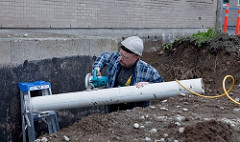This 1970 safety video is a must-see, according to a guy at my local cafe. It’s described as “The Citizen Cane” of safety films. Some say they saw it at diesel college and in shop class every year. Have you seen it, long ago or recently?
Category: Training & education
People talk. Messages from different people and companies, in different situations, are going out to different groups of people. People listen, and maybe ask questions. Then they leave and go home. But how can we encourage them to take away the ideas we offer?
“Don’t ever be afraid to trust your gut instincts,” says nurse Barb Valois, speaking to home care workers on a new video from WorkSafeBC. “You always have the right to refuse unsafe work.”
Safety failures from around the world, in a video compilation from Maple Industrial Hygiene.

Enter to win a free pass to the conference by leaving a comment, retweeting it on Twitter, or introducing yourself on the Speaking of Safety Group on Facebook. I will draw one winner on Thursday, October 14, 2010. The Make It Safe conference is in Richmond, BC on Oct. 25 and 26, 2010.
Crew talks are an excellent way to deliver information on the job site. When it’s time to show the crew how to use a new piece of equipment or perform a new process safely, follow these eight steps to communicate your message on the shop floor, outside the site trailer, or at the cash register.

Can you spot six hazards in this photo? WorkSafe Magazine invites you to e-mail your answers and be eligible for a prize awarded to one person each issue. The magazine publishes as many responses as possible. So far, this photo challenge is drawing answers from as far away as Africa, Poland, India, Ireland, and the United Arab Emirates.
I’ve noticed quite a few YouTube videos that spoof the shocking safety videos released by the WSIB in Ontario.
I had some responses to my last post on shockvertising. I agree with Liv that I’d rather see a more positive approach – maybe a dad with his kids, saying “keep him safe” and not an example of “what terrible thing will happen to this family man.”
Falls are a hazard for everyone in construction, but young workers seem to be especially vulnerable. That’s why WorkSafeBC developed the Ladder Challenge, an online game and contest to raise awareness of hazards associated with ladder use in residential construction.


